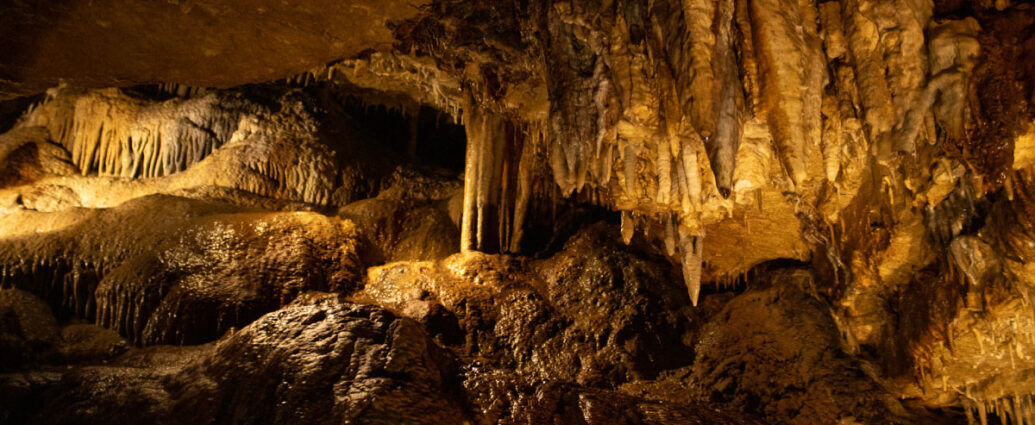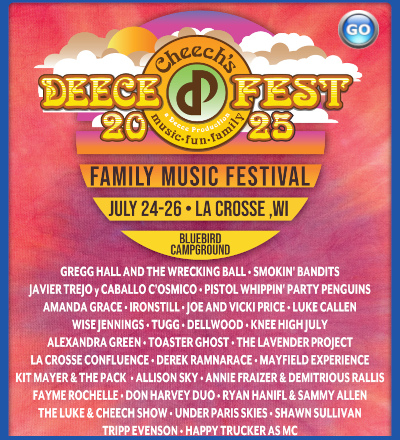Sixteen years ago, I waited impatiently at my desk for our second-grade classroom to be dismissed to line up outside. I was huddled onto a long yellow school bus with a few dozen of my closest friends and whisked away to Blue Mounds, Wisconsin.
The bus ride felt like an eternity to a seven-year-old, so when the doors folded open at Cave of the Mounds, we jumped off that last step with a little extra pep.
The exterior of the building held no interest for seven-year-old me, but when we walked inside and made our way to the ‘back room,’ I couldn’t believe my eyes. It was like we had stepped through the wardrobe into Narnia.
Somehow, with a single step, we were transported from an ordinary building to an underground cavern. It was like entering the mouth of a giant hollow rock with teeth hanging from the ceiling and sticking up from the ground. This was the Cave of the Mounds.
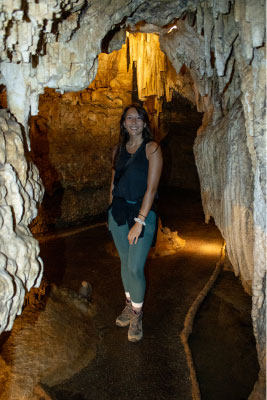 This same wonder washed over me as an adult as I stepped through those doors. It was like seeing it through the eyes of a kid again the moment I was among the stalactites and stalagmites.
This same wonder washed over me as an adult as I stepped through those doors. It was like seeing it through the eyes of a kid again the moment I was among the stalactites and stalagmites.
We wandered down the paved path, careful not to step off the trail as we admired everything around us. The formations of the cave were beyond words, but if I had to try, I’d say they were otherworldly.
The mineral deposits protruding from the ground were bumpy yet smooth. It looked like the water that had once carved these passageways had turned to stone mid-flow. Stalactites poured over ledges like frozen waterfalls and rocks bubbled over each other like rushing rapids.
At times we stood in large caverns multiple stories high, at others we were ducking and squeezing through narrow passageways. The sheer size of the cave baffled me. From the surface, you’d never expect to be walking around with this hidden wonder just below your feet.
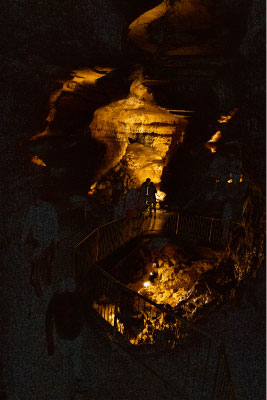 There were informational stands along the path that made it easy to understand the rock formations you were looking at, and some of them even had some short interactive activities for kids to try to boost their understanding. We also talked with a few of the cave guides who were helpful in pointing out unique cave features that we would otherwise have totally missed.
There were informational stands along the path that made it easy to understand the rock formations you were looking at, and some of them even had some short interactive activities for kids to try to boost their understanding. We also talked with a few of the cave guides who were helpful in pointing out unique cave features that we would otherwise have totally missed.
One of these informative stands explained how the glaciation events happening elsewhere in the state contributed to the formation of the cave through the process of freezing and thawing. During these thaws, a large amount of meltwater would seep into the water table and erode the bedrock.
In one of the larger caverns, a cave guide pointed out a crack in the of the cave’s ceiling where water once leaked through from the surface and eroded the limestone bedrock, helping to create small pockets underground. As more water seeped through from the surface, they eroded these pockets until they eventually formed the caverns and passageways visitors walk through today.
I have to admit; I was excited but also a little afraid to come back to Cave of the Mounds. I had such fond memories of coming here as a kid. I was afraid seeing it as an adult would make the magic disappear. In full honesty, I think I enjoyed it just as much as I did sixteen years ago. Seeing the cave through the eyes of an adult gave me the perspective to really appreciate and understand what I was experiencing.
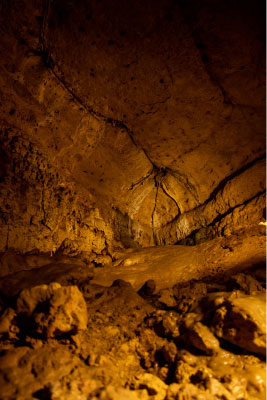 After we finished the self-guided cave tour, I wasn’t ready for the adventure to end, so we picked out two sluicing bags from the gift shop and headed out to the sluices. We poured our sand into our sifters and began searching for the hidden artifacts that the water revealed.
After we finished the self-guided cave tour, I wasn’t ready for the adventure to end, so we picked out two sluicing bags from the gift shop and headed out to the sluices. We poured our sand into our sifters and began searching for the hidden artifacts that the water revealed.
I am convinced that in another life, I must have been a paleontologist. So I chose the Paleo bag where I uncovered multiple shark teeth, dinosaur bones, coral and my favorite, amber. I was whole-heartedly giddy as I picked pieces of history out of my tray. My partner chose the other sluicing option: the gemstones bag. He discovered gems and minerals like quartz, calcite, obsidian, and even pyrite, otherwise known as Fool’s Gold.
We came away from the sluices feeling like rather accomplished scientists, proudly holding our bags of findings. But we had one last activity we wanted to do before calling it a day: the geode crack. We spent a good amount of time tapping on geodes, pretending to tell if they were hollow and would crack well, before actually choosing one to try.
We asked a staff member to help us with the machinery, and we watched and waited for the loud crack as the geode was split open. The symbolism of the geode is a great lesson for kids and adults alike. It doesn’t matter what’s on the outside, it’s what’s on the inside that counts. I like to keep my geode on display; one, for the daily reminder, and two, because rocks are cool.
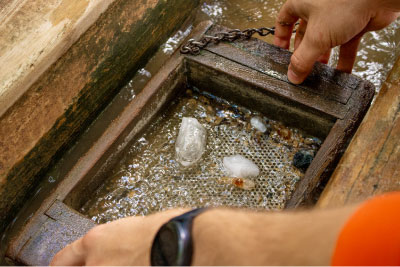 But that’s not the only thing I keep on display. The Cave of the Mounds gift shop had something for all kinds of visitors. Whether you were the little scientist, the explorer, or the chaperon, they had a wide variety of souvenirs and educational props.
But that’s not the only thing I keep on display. The Cave of the Mounds gift shop had something for all kinds of visitors. Whether you were the little scientist, the explorer, or the chaperon, they had a wide variety of souvenirs and educational props.
Inspired by the fossils I had seen in the cave, and my Paleo bag, I decided to take a few extra souvenirs home with me: a sand dollar fossil, trilobite and a fish fossil from the Green River. I think it is incredibly important to learn about and appreciate the history of our planet. What better way than to learn with hands-on activities and experiences? I’m not sure where my love for the outdoors and science came from, but maybe the Cave of the Mounds planted the first seed.
Overall, I would recommend the Cave of the Mounds to anyone passing through the area. Whether you’re traveling with teens or toddlers, or even on your own, there are fun activities for all ages and interests. Explore the cave, go sluicing for gems, check out the sinkholes and hike the trails. The Cave of the Mounds brings an experience to the Driftless Region that you’d expect to only find out west.
Writing & Photography by Kylie Compe

